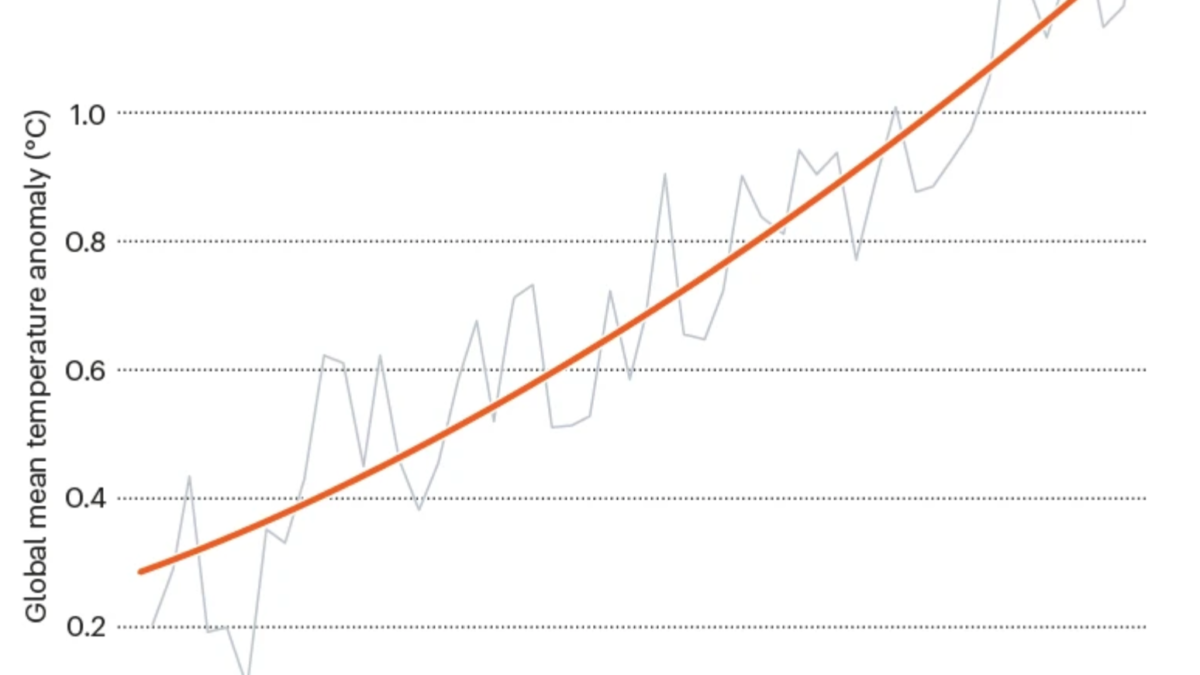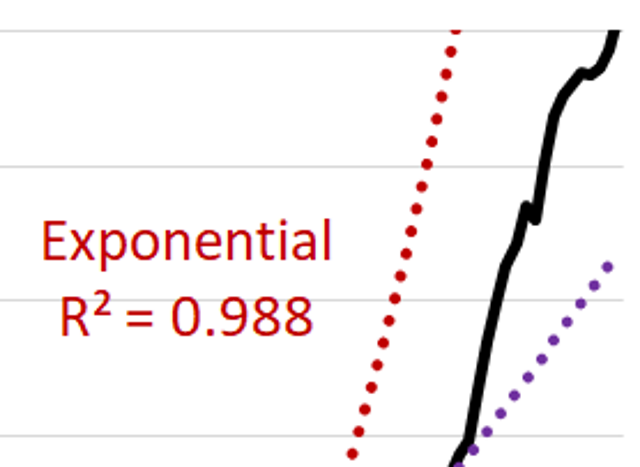Forced labor from China’s Uighur Muslims “behind global supply of solar panels”
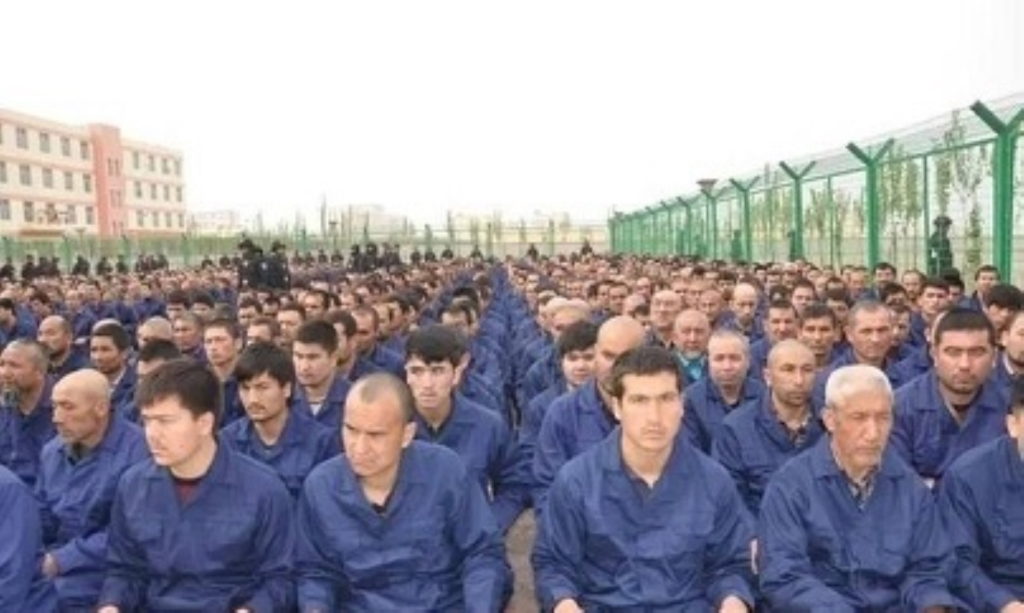
By Sam Courtney-Guy
15 May 2021
(MetroUK) – A huge chunk of the world’s solar panels production depends on forced labour from China’ Uighur Muslims, according to new research.
An investigation by Sheffield Hallam University estimates almost half of global supplies of polysilicon are produced by Uighurs under conditions ‘tantamount to enslavement’ in their home province of Xinjiang [In Broad Daylight: Uyghur Forced Labour and Global Solar Supply Chains (pdf) –Des].
Some 95 per cent of all solar panels need polysilicon, used to make cells which convert light into electricity. More than 90 per cent of all polysilicon ends up being used for this purpose.
The other 10 per cent is used to make semiconductors – key components in smartphones, laptops, and various other devices using electrical circuits.
The solar supply chain is relatively easy to map, and identifying forced labour exposure in Xinjiang is less of a challenge than in industries such as textiles or agriculture. And doing so is critical, as it would not only address the forced labour issue in Xinjiang but would also substantially reduce the carbon emissions of the solar industry. From a human rights and climate perspective, the alternative of basing our green energy future on coal’s high carbon emissions and on the forced labour of oppressed communities is a higher and longer-term price to pay.
Laura T. Murphy and Nyrola Elimä, In Broad Daylight: Uyghur Forced Labour and Global Solar Supply Chains, p. 8
China has come under intense international scrutiny for its treatment of Uighurs, notably in mass ‘re-education’ camps where former detainees claim to have experienced a system of mass torture, rape and forced sterilisation of women.
Officials deny human rights abuses and say the programmes are designed to ‘rehabilitate’ offenders linked to ‘terrorism’ in the province.
The government freely admits to the ‘placement’ of 2.6 million ‘minoritised’ citizens in various factory and farm jobs in Xinjiang and other provinces, but insists they are all taking part in voluntary ‘labour transfer’ schemes.
The researchers pieced together dozens of documents issued by Chinese authorities and companies. They said ‘labour transfers are deployed in the Uighur Region within an environment of unprecedented coercion, undergirded by the constant threat of re-education and internment.’ [more]
Forced labour from China’s Uighur Muslims ‘behind global supply of solar panels’
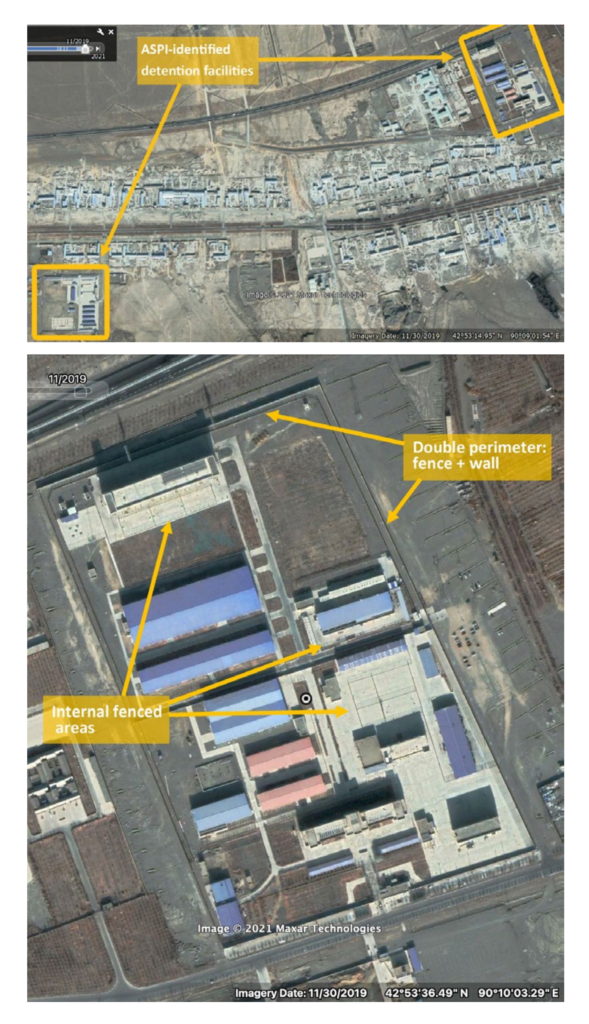
In Broad Daylight: Uyghur Forced Labour and Global Solar Supply Chains
14 May 2021 (Sheffield Hallam University) – The People’s Republic of China (PRC) has placed millions of indigenous Uyghur and Kazakh citizens from the Xinjiang Uyghur Autonomous Region (XUAR or Uyghur Region) into what the government calls “surplus labour” (富余劳动力) and “labour transfer” (劳动力转移) programmes. An official PRC government report published in November 2020 documents the “placement” of 2.6 million minoritised citizens in jobs in farms and factories within the Uyghur Region and across the country through these state-sponsored “surplus labour” and “labour transfer” initiatives. The government claims that these programmes are in accordance with PRC law and that workers are engaged voluntarily, in a concerted government-supported effort to alleviate poverty. However, significant evidence – largely drawn from government and corporate sources – reveals that labour transfers are deployed in the Uyghur Region within an environment of unprecedented coercion, undergirded by the constant threat of re-education and internment. Many indigenous workers are unable to refuse or walk away from these jobs, and thus the programmes are tantamount to forcible transfer of populations and enslavement. [In Broad Daylight: Uyghur Forced Labour and Global Solar Supply Chains (pdf) –Des]
It is critical that we examine the particular goods that are being produced as a result of this forced labour regime. This paper focuses on just one of those industries – the solar energy industry – and reveals the ways forced labour in the Uyghur Region can pervade an entire supply chain and reach deep into international markets. We concluded that the solar industry is particularly vulnerable to forced labour in the Uyghur Region because:
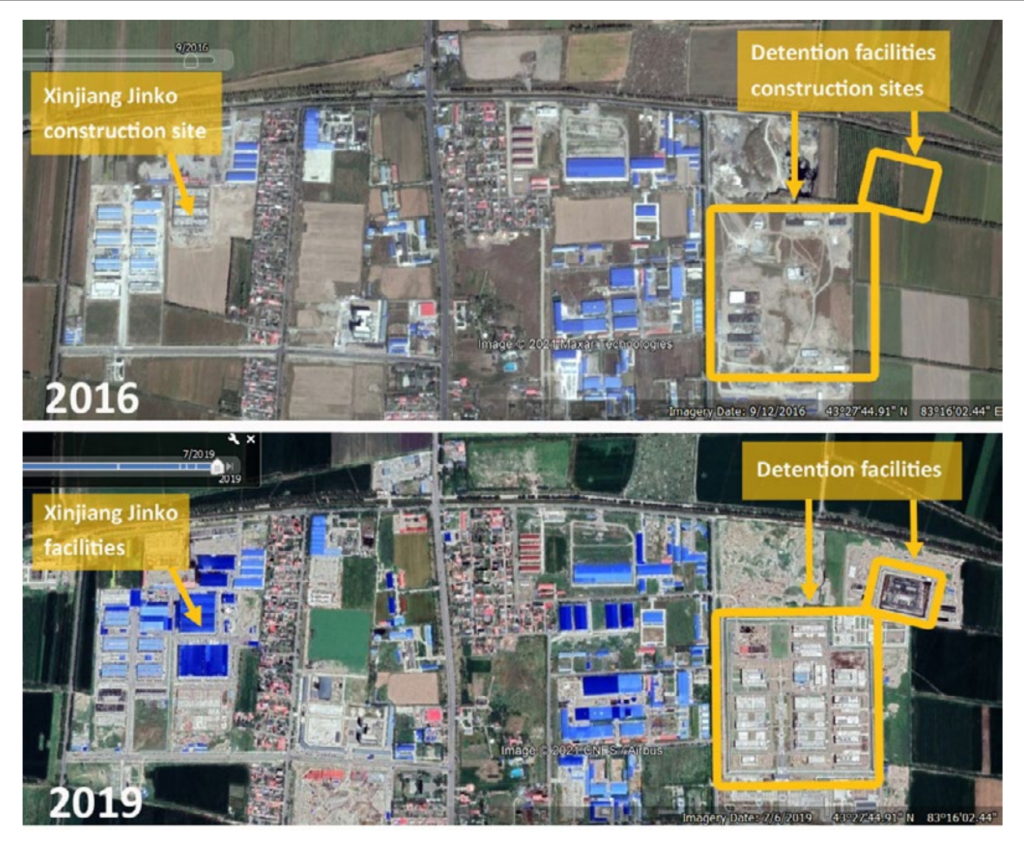
- 95% of solar modules rely on one primary material – solar-grade polysilicon.
- Polysilicon manufacturers in the Uyghur Region account for approximately 45% of the world’s solar-grade polysilicon supply.
- All polysilicon manufacturers in the Uyghur Region have reported their participation in labour transfer programmes and/or are supplied by raw materials companies that have.
- In 2020, China produced an additional 30% of the world’s polysilicon on top of that produced in the Uyghur Region, a significant proportion of which may be affected by forced labour in the Uyghur Region as well.
In the course of this research, we identified:
- 11 companies engaged in labour transfers
- 4 additional companies located within industrial parks that have accepted labour transfers
- 90 Chinese and international companies whose supply chains are affected
This report seeks to increase the knowledge base upon which the solar industry determines its exposures to forced labour in the Uyghur Region. We investigated the entire solar module supply chain from quartz to panel to better understand the extent to which forced labour in the Uyghur region affects international value chains. The examples of engagement in these programs are meant to provide stakeholders with the evidence base upon which to judge risk of exposure to forced labour in the solar supply chain.
Evidence base
The evidence of forced labour in the Uyghur Region is expansive and growing. The Forced Labour Lab is committed to making evidence and data regarding the oppression of minoritised citizens in the Uyghur region available to the public.
The evidence presented in the report is all publicly available. However, due to the frequency with which corporate reports, news, and social media pages are removed from the web, all websites referred to in the paper have been archived through the Archive.Today website. Archived versions of pdfs are only screenshots of the website, so those materials are collected here. Materials presented below can be used to understand the industry better and illustrate the investment of solar/polysilicon industry in Xinjiang.
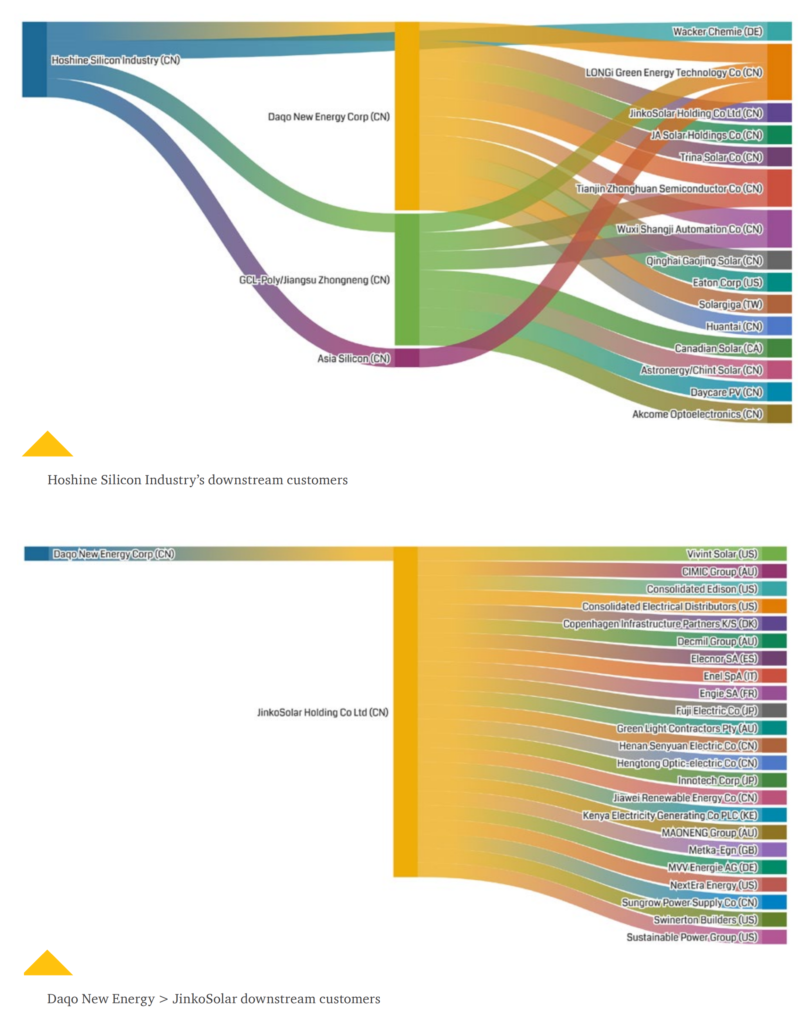
Corporate Reports
Corporate disclosures play an important role in understanding the supply chain. These are some of the reports we refer to in our report. (We have not included the cited US SEC filings here because they are easily accessible for free online.)
- Asia Silicon 2020 Prospectus (draft) (PDF, 5.5MB)
- Changji Jisheng 2018 Environmental Protection Acceptance Monitoring Report of Changji Jisheng New Building Materials Co., Ltd. with an Annual Output of 300,000 Tons of New Energy High-end Non-ferrous Metal Profiles (PDF, 21.5MB)
- Changji Jisheng New Building Materials Co. ,ltd The Environmental Impact Report of the New Silicon Material Project with an Annual Output of 450,000 Tons (120,000 tons in the Second phase) of Changji Jisheng New Building Materials Co., Ltd (PDF, 2.2MB)
- Changji New Materials Co 2016 The Silicon Industry Branch investigated the industrial silicon enterprises in Yili, Xinjiang. (PDF, 389.8KB)
- Dadi Zelin 2019 Xinjiang Dadi Zelin Silicon Industry Co., Ltd. Environmental Protection Acceptance Opinion for the Completion of the 100,000-ton Metal Silicon Fume Production and Construction Project (PDF, 1004.7KB)
- Daqo 2018 Prospectus Supplement (PDF, 1.4MB)
- Daqo 2020 Prospectus (Declaration draft) (PDF, 5.1MB)
- Daqo 2021 Prospectus (draft) (PDF, 7MB)
- East Hope 2020 Xinjiang East Hope New Energy Co., Ltd. 120,000 Tons of Polysilicon (30,000 Tons in the first phase) Project Completed Environmental Protection Acceptance Monitoring Report (PDF, 23.5MB)
- GCL 2020 Party Group Work Briefing Report (PDF, 2.4MB)
- GCL-Poly Energy 2021 GCL-Poly Energy Holdings Co., Ltd. (1) Very Material Disposal Sale of Subsidiaries (2) Potential Very Material Acquisition Grant of Put Options and Notice of Special General Meeting (PDF, 2.8MB)
- Hami Liurui 2018 Hami Liurui 13th Division Liushuquan Farm Phase I 20MW Photovoltaic Power Project Water and Soil Conservation Facilities Acceptance Report (PDF, 7.2MB)
- Hami Xuanli 2018 Acceptance Certificate of Water and Soil Conservation Facilities for Production and Construction Projects (PDF, 1018.2KB)
- Hoshine 2018 Annual Output of 100,000 Tons of Siloxane and Downstream Deep Processing Project of the Environmental Impact Report of Hoshine Silicon Industry (Shanshan) Co., Ltd (PDF, 4.8MB)
- Hoshine 2019 Annual Audit Report (PDF, 5.9MB)
- Hoshine 2019 Annual Report (PDF, 3.5MB)
- Hoshine 2020 Annual Report (PDF, 5.9MB)
- JA solar 2019 annual report (PDF, 2MB)
- JA solar 2020 annual report (PDF, 10.3MB)
- Jinko 2017 Annual Report (PDF, 11.2MB)
- Jinko 2018 Annual Report (PDF, 38MB)
- Jinko 2018 Resubmitted the Environmental Impact Report for the Monocrystalline Silicon Pull Rod Construction Project with an Annual Output 5GW of Xinjiang JinkoSolar Co., Ltd (PDF, 2.7MB)
- Jinko 2020 Prospectus Supplement (PDF, 2.2MB)
- Jinko Energy 2016 Phase I 20MW Optical Grid-connected Power Plant Project Emission Reduction Verification Report (PDF, 1.4MB)
- Jinko Power Technology 2019 Prospectus (Application Draft) (PDF, 4.9MB)
- LONGi Green Energy 2019 Annual Report (PDF, 4.2MB)
- LONGi Green Energy 2020 Semi Annual-Report (PDF, 3.8MB)
- Risen Energy 2019 Annual Report (PDF, 8.8MB)
- TBEA 2018 Annual Report (PDF, 3.6MB)
- TBEA 2019 Annual Report (PDF, 4.4MB)
- Tianjin Zhonghuan 2020 Summary of Prospectus for Tianjin Zhonghuan Semiconductor Co., Ltd. for the Public Issuance of Corporate Bonds (Phase 1) to Qualified Investors in 2020 (PDF, 6.7MB)
- Tianjin Zhonghuan Semiconductor 2019 Annual Report (PDF, 9.3MB)
- Tianye Tolian 2019 Major Assets Sale and Issuance of Shares to Purchase Assets Related Transaction Report of Qinghuang dao Tianye Tolian Heavy Industry (PDF, 9.6MB)
- Tianye Tolian 2019 The Legal Opinion of Beijing King&Wood Mallesons on the Sale of Major Assets and the Issuance of Shares to Purchase Assets and Related Transactions of Qinhuangdao Tianye Tolian Heavy Industry Co., Ltd (PDF, 12.4MB)
- Tongwei 2019 Annual Report (PDF, 4.6MB)
- Tongwei 2020 Announcement of Tongwei Co., Ltd. on Signing a Major Sales Framework Contract. (PDF, 180.5KB)
- Trina 2021 Prospectus for the issuance of convertible corporate bonds by Trina Solar Co., Ltd. to unspecified targets ( draft) (PDF, 6.6MB)
- Trina Solar 2020 Prospectus (PDF, 24.7MB)
- Wuxi Shangji Automation 2020 Announcement of Wuxi Shangji Automation Co., Ltd. on the Signing of Major Procurement Contracts by its Subsidiaries (PDF, 151.5KB)
- Wuxi Shangji Automation 2020 Signed a major purchase contract for silicon materials of nearly 4 billion yuan, and the monocrystalline silicon business is expected to exceed expectations. (PDF, 1011.9KB)
- Xinjiang TBEA 2019 Prospectus (PDF, 7MB)
- Xinjiang Tianfu 2020 Semi annual Report (PDF, 3.1MB)
- Xinjiang Tianye 2018 Annual Report (PDF, 3.8MB)
- Xinte Crystalline 2019 Xinjiang Xinte Crystalline Silicon High-Tech Co., Ltd. 3X12,000 Tons of High-purity Polysilicon Industry Upgrade Construction Project Completed Environmental Protection Acceptance Monitoring Report (PDF, 4.9MB)
Government Reports, Rulings, and Directives
Local and regional governments provide cadres with specific instructions as to how to operate labour transfers and surplus labour programmes. These directives and reports help us to understand the way the state is integrally involved in labour recruitment practices in the Uyghur Region.
- Outline of the 13th Five-Year Plan for the National Economic and Social Development of the XUAR (PDF, 1.1MB)
- Final Review Ruling of the Ministry of Commerce of the PRC on the Countervailing Measures Applicable to Imported Solar-grade Polysilicon Originating in the United States (PDF, 724.4KB)
- Liurui 2016 Hami Liurui 13th Division Liushuquan Farm Phase I 20MW Photovoltaic Power Project Water and Soil Conservation Facilities Summary report (PDF, 31.2MB)
Industrial Parks
Industrial parks play a central role in the development of the industry in the Uyghur Region, as well as in the transfer of labour.
- Shanshan 2020 Shanshan Longsheng Carbon Manufacturing Environmental Protection Acceptance Monitoring Report (PDF, 1.6MB)
- Shanshan Longsheng 2020 The Environmental Protection Acceptance Monitoring Report of Shanshan Longsheng Carbon Manufacturing Co., Ltd. with an Annual Output of 10,000 Tons of Special Graphite Comprehensive Utilization Project (PDF, 1.7MB)
- Shanshan County People’s Government Network—Wusman.Yiliniyazi (PDF, 586.3KB)
- Shanshan stone park 2019 Implementation Evaluation Report of Xinjiang Shanshan Stone Industrial Park Master Plan (2005-2020) (PDF, 3.5MB)
- Xinyuan Industrial Park 2015 Investment Guide (PDF, 4.3MB)
- Yili Jincheng 2019 Environmental Impact Report on the Pipe Manufacturing Project of Yili Jincheng Jiaye Pipe Manufacturing Co., Ltd (PDF, 6MB)
- Yili Kazakh Autonomous Prefecture 2017 Investment Promotion Documents (PDF, 2.5MB)
- Yongxiang 2018 Corporate Social Responsibility Report (PDF, 424.8KB)
Peking University report on monority laborers in Xinjiang.
Industry Responses to Forced Labour in the Uyghur Region
- SEIA Supply Chain Traceability Protocol v1.0 April 2021 (PDF, 1.8MB)
- Corporate Responses to Requests for Information (PDF, 262.6KB)
In Broad Daylight: Uyghur Forced Labour and Global Solar Supply Chains
